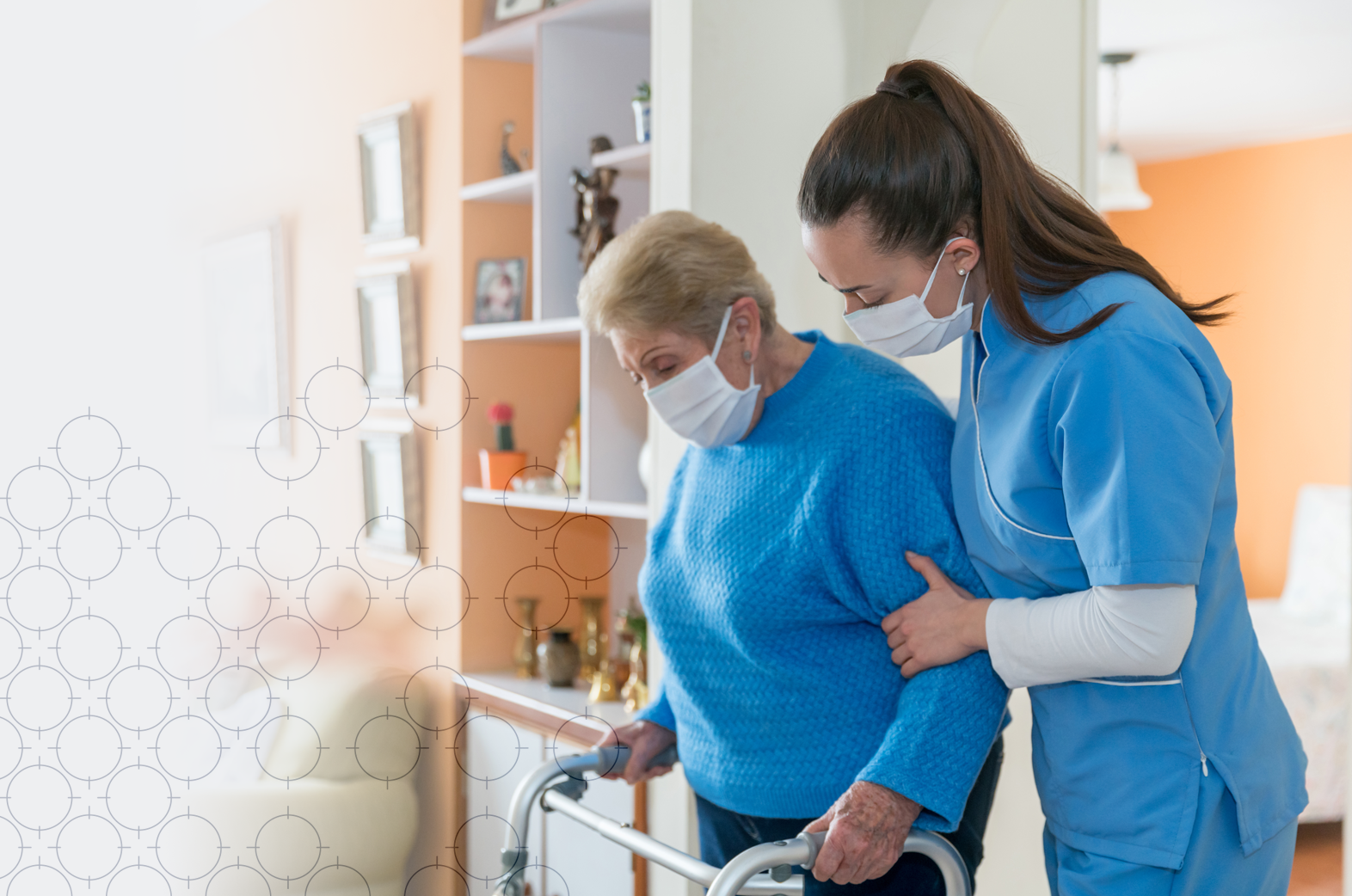Infection prevention and control in your LTCF: Webinar recap
Learn how to stop infections spread via MDROs and other pathogens.

It’s a matter of getting back to the basics—and compliance
The numbers are daunting. As many as 3 million serious infections occur each year in long-term care facilities (LTCFs)1, and approximately 380,000 residents die from them.2 These conditions can include urinary tract infections, C. difficile, MRSA, multidrug-resistant infections and others, and can cause death in LTCFs.3
1 to 3 million
serious infections occur in LTCFs each year1
380,000
residents die from infection every year2
In a webinar titled “Evidence-Based Strategies for Infection Prevention and Control in Long Term Care” for McKnight’s Long-Term Care News, Nikki Cracknell, MS, RN, Medline Senior Manager of Clinical Development and Medical Science Liaison in Medical Affairs, talks about the risks, their significance and how they occur. She also shares evidence-based infection prevention and control best practices to help keep people safe.
Why infection outbreaks occur
More than 1.2 million Americans live in nursing homes, and more than 800,000 live in assisted-living facilities.4 When people—many of them with compromised immune systems—are living this close together, they’re more likely to pick up infections that are transmitted from person to person or through cross-contamination in their surroundings.
C. diff and other multidrug-resistant organisms (MDROs)—organisms that can’t easily be killed by antibiotics—are a prevalent problem and can cause many of these infections. In fact, 64 percent of nursing home residents harbor at least one MDRO.5
So, what can we do?
Start with good hand hygiene
It’s hard to believe, but approximately 80 percent of all infections are transmitted by hand6, yet about 60 percent of healthcare workers don’t adequately wash theirs.7 We can minimize infection by getting back to something as simple but important as practicing good hand hygiene. This means:
- Clean hands for at least 20 seconds using at least 60 percent alcohol-based hand rub (ABHR) when working with patients or residents.8
- Wash hands for at least 20 seconds with soap and water when hands are visibly dirty, before eating, after using the restroom, and after caring for people with infectious diarrhea.8
- Place soap and ABHR dispensers throughout facilities.
Explore new ways to prevent and control infection
- Have a designated infection preventionist and multidisciplinary oversight team to detect, treat, contain and prevent transmission.
- Implement outbreak control measures as soon as possible.
- Use antimicrobial ointments (mupirocin or PVP-I) and body washes (chlorhexidine gluconate) to prevent healthcare-associated infections.
- Select cleaning products specifically formulated and EPA-registered to kill some of the most contagious and hard-to-kill pathogens.
- Have clear messaging and policies for hand hygiene and other basic practices.
- Invest in ongoing training and education so that clinical and professional cleaning staff understand the important role they play in infection prevention and use best practices.
- Have protocols for transferring residents to and from facilities.
Key takeaway
Long-term care providers need a robust infection prevention strategy to reduce the risk of transmission and keep residents safe. The strategy should: 1) build on evidence-based information and best practices; 2) be mindful of the basics—starting with hand hygiene; and 3) be committed to ongoing training and communication.
Looking for more insights and strategies to fight infection?
Learn how to create a culture of safety and fight the spread of pathogens.
Explore new ways to make hand hygiene second nature.
Read the article Target zero harm with a 3-zone infection prevention strategy.
References:
- Long-term Care Facilities | CDC
- 388,000 residents die each year of HAIs with infection control practices lacking, experts warn—McKnight’s Long-Term Care News (mcknights.com)
- https://www.cdc.gov/longtermcare/resident/index.html
- 25 Insightful Nursing Home Statistics [2022]: Residents, Locations, And Long-Term Care—Zippia
- Abstract: The CDC SHIELD Orange County Project—Baseline Multi Drug-Resistant Organism (MDRO) Prevalence in a Southern California Region (IDWeek 2017) (confex.com)
- https://insights.ibx.com/handwashing-secret-good-health/
- https://www.cdc.gov/HandHygiene/download/hand_hygiene_core.pdf
- Hand Hygiene in Healthcare Settings | Handwashing | CDC
